Matthew A. Henson, who is visiting the Powell family in Oak Bluffs for a few weeks, proclaims with twinkling eyes that he is too young now to go on Arctic explorations. He accompanied Admiral Peary on eight expeditions, was the first man to arrive at the North Pole and to raise the American flag there. He received an honorary degree of master of science from Morgan University in Baltimore ten years ago, and from Howard University in Washington this year. He also received an engraved watch this year from the Explorers Club in New York. He was retired on a government pension three years ago, and has now stopped having birthdays, he says.
“It’s a dog’s life,” he said in regard to his eighteen years as an explorer. “It’s a dog’s life, but it’s a man’s work.”
Mr. Henson was born in Charles County, Md. He left home when he was nine years old, and has never been back.
“Why should I?” he asked. “I didn’t leave anything. My mother died when I was 4, my father when I was 8. From that time on I had to hustle for myself. No one ever gave me another nickel.”
His Imagination Was Fired
His decision to be an Arctic explorer began when he read stories about expeditions to the Far North. His imagination was fired by the tales of long journeys by dog-sled, snow and floating blocks of ice, of men risking their lives in the bitter climate.
“To tell you the truth,” he admitted, “I was just dying for the sensation of feeling part of me freeze. I’d read so much about it.”
Peary’s first expedition started in 1891.
“This wasn’t yesterday, was it?” commented Mr. Henson, recalling those exciting years of his life. “We traveled 1300 miles into the interior of Greenland. The temperature was from 68 to 72 degrees below zero. A little chilly, that weather up there. Finally all the men froze except Lee, Peary and myself and we had to return to take them back to headquarters.”
In the second expedition, from ‘93 to ‘95, the reached Independence Bay. Gales and heavy drifts of snow slowed down their progress, making their food supply run short.
“Those were starvation expeditions we took,” he said. “We had no well organized exploration parties paid for by the government, they way Byrd did. Our money was collected by subscription, a dollar here, a dollar there. Some might give us a nickel, some maybe a hundred dollars. We never had enough food. When we ran out we hunted for whit whales and polar bears and ate them raw. Alcohol was our fuel, and when that ran out there was no more fire.
“On the second expedition we started out with thirty-six dogs. Their number had dwindled down to nine when our food supply gave out completely. We killed the nine remaining dogs and stacked them on the sled for food. They had to be eaten raw too, of course. After that we had to pull the sled ourselves.
The third and fourth expeditions took place in ‘96 and ‘97, one to Franklin Bay, the other to Cape Sabine. In 1903 they traveled 400 miles by dog sled on the ice which had sealed the sea. Within 125 miles of the Pole, the ice broke up and they floated for fifteen or sixteen days on a loose block. Finally the wind went down and they were able to start back again. Within 100 miles of land the ice broke once more and they were carried back within eighty-five miles of their starting point.
“I Always Called It Home”
“We finally did manage to get home though,” said Mr. Henson. “By that I mean headquarters. I always called it home. It wasn’t really, but it was on the way there.”
On the next to the last expedition Peary froze his feet, and on one foot joints dropped off every toe except the little one. There was no doctor on the expedition, and until they reached headquarters again, Mr. Henson fixed them as best he could, cutting the joints farther down with a bone clipper and sewing the skin over the ends. No ether could be used. The few times they tried it they had trouble reviving the patient. After his feet froze, Peary used to sleep with them against Henson’s bare stomach to prevent them from freezing again.
“Freezing some part of you is just like sticking it in a hot oven. It turns black and if it is froze bad enough it drops off,” explained Mr. Henson. “I froze my face a couple of times. First it felt like a lot of little pins sticking into me. Then it didn’t feel at all. Not ‘till it began to thaw out. That is the worst time of all.”
The expedition in 1909 started from Cape Columbia, with twenty sleds from twenty-eight men. Some of these were just supporting parties, that is sleds to carry the supplies.
“Five sleds would carry the rations for five days,” said Mr. Henson. “Then, when their supplies were gone, we had to get rid of them so we sent them back to headquarters.” Every man was allowed seven pounds of pemmican a week and seven pounds of hardtack. The dogs had a pound of pemmican a day too, though theirs was a little different from ours. Had bone all ground up in it, while ours was just beef, raisins and fats, all packed together in a tin.”
The clothes they wore consisted of a fur shirt, a fur coat, and fur trousers. These were never taken off the whole trip. Their boots of bear skin lined with rabbit fur, were chopped off every twenty to twenty-five days and thrown to own of the dogs.
“The dog who bot the boots went without his pemmican that night,” said Mr. Henson.
The party finally narrowed down to six, four Eskimos, Peary and Henson. Every night they built two small igloos “just like beehives,” to keep the wind off them while they slept. Three men slept in each, taking turns for the warm place in the center. Their breath melted the low roof, bringing an icy trickle of water down on them all night, so that they had to shift from side to side to keep the ice from freezing too hard on their faces. And every time one man shifted the other two had to move too, so close were the quarters in which they slept.
Reached Goal at Last
On April 6 the little group at last reached their goal. Mr. Henson who had been the leader all through that last expedition, and had gone ahead with the compass, arrived forty-five minutes before Peary and had his igloo built by the time the admiral arrived.
“On April 7,” he said, “I put in the flag, we all gave three cheers for Old Glory and started back to headquarters.”

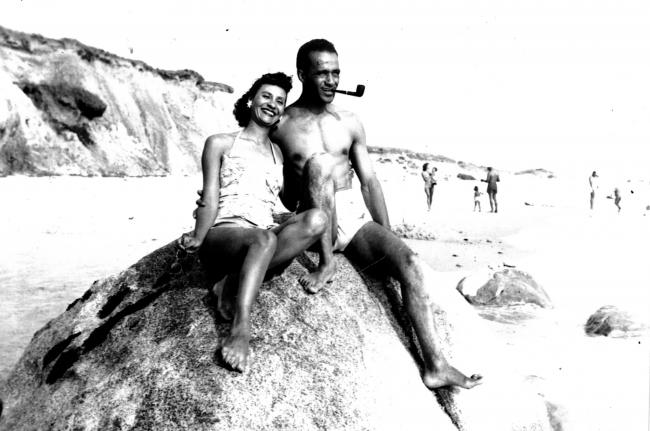




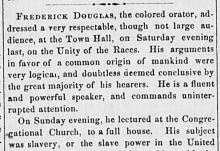
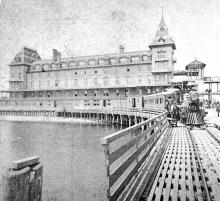
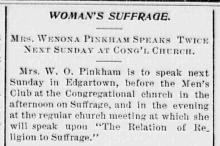

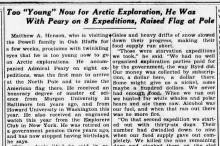
Comments